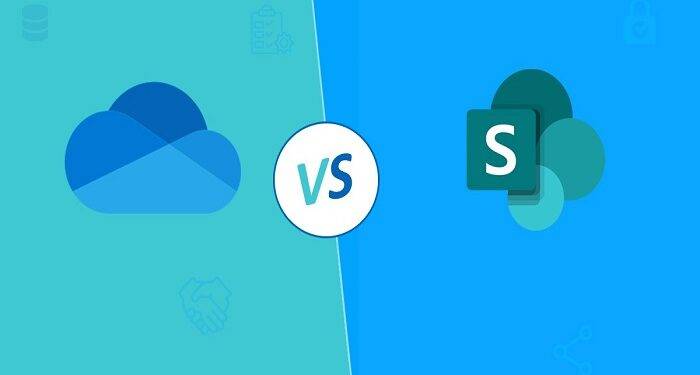At first glance, most people would look at SharePoint and OneDrive and be confused as to why they are different products offered by Microsoft. The two products have many crossover features and capabilities revolving around file management and storage. Both products are cloud-based and fall under Microsoft 365’s product family. So what makes them different?
Microsoft SharePoint was the first to be released in 2001 as a simple document management platform made to have a central space to share information and files. Today if you were to speak to a trusted Managed IT Services Company they would likely recommend using SharePoint in the workspace because of its rich intranet capabilities. For the companies that use it, the platform has given them a private network where all employees can come together to communicate, collaborate and securely store and share resources and files.
OneDrive came a bit later, launching in 2007 the service was created to be a file hosting space where users can share and synchronize all their files over a variety of devices. Users can use OneDrive to store and share all types of media and files to give them peace of mind that their content is always easily accessible and secure.
So we know that SharePoint and OneDrive both deal with storing and sharing documents and resources. What sets them both apart really comes down to the intention of those documents. Realistically anyone using SharePoint will be doing so with the intention of sharing and collaborating with others in a business. OneDrive has many great features but it won’t be able to do everything that SharePoint can.
TechQuarters, a trusted IT support company based in London, describes OneDrive as Microsoft’s more mainstream cloud-based service that is available to anyone. Instead of just storing their valued personal files like photographs, videos and important documents on one device, users can use OneDrive to ensure those files will never disappear if their device gets damaged, lost or stolen. OneDrive can also be used for work as well. Users can easily use OneDrive to grant access to whomever they need to have access to files so that smaller groups and teams can collaborate.
Microsoft SharePoint can do all of this but more. OneDrive is a simple cloud storage solution in comparison to SharePoint which is a complex document management software. Beyond being able to simply store and share documents and files, SharePoint allows companies to circulate updates, centralise all resources and files and create visually appealing sites and pages to find everything. SharePoint also has enterprise-grade security to ensure that all data is protected by world-class security measures.
SharePoint’s features include the ability to create libraries to categorise documents, create Microsoft 365 documents within the server, share files with single users or groups, create news posts, allow for automation of tasks, create lists and also integrate with other apps like OneNote.
So coming down to it, if you were to ask a Microsoft 365 Consulting provider on which should be your pick it will come to what your intentions are with the platform and what scale you’re currently at. OneDrive is mostly recommended to those looking for storage and sharing for personal use, freelancers like writers or photographers, or small businesses with fewer resources and employees.
If you’re looking for enterprise-ready software to support medium to very large numbers of employees, teams and data, then SharePoint is the path to choose. SharePoint was made for large operations, especially those with teams already using Microsoft’s products and services every day like Teams, Outlook, Excel and more.
It’s important to note that there’s nothing stopping a smaller business from adopting SharePoint but it is significantly more complex and needs a good IT team or IT support company available to set up and maintain the server.









